FPV racing drones come in many shapes and sizes, each suited for different environments and flying styles. They can be categorized by size and intended use.
By Size
One of the key characteristics of a racing drone is its size, typically measured by the diagonal distance between the motors in millimeters. Another common way to classify size is by the maximum propeller size the frame
Tiny Whoop
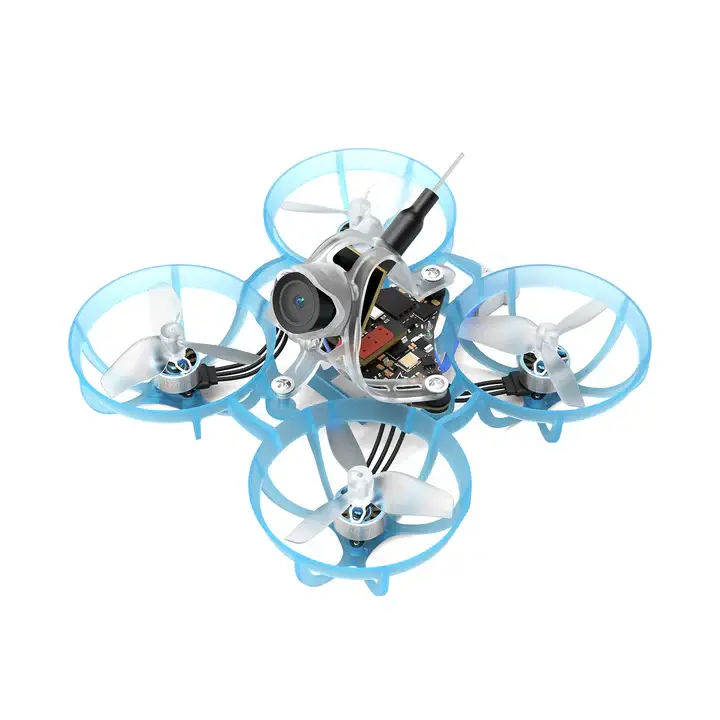
Tiny Whoop is the smallest class of FPV drones. With a motor-to-motor distance of around 65mm and a weight under 30 grams, these drones are powered by brushed DC motors and a single-cell (1S) battery. Thanks to their lightweight design and ducted propellers, they are very safe to fly — even indoors. You don’t have to worry about damaging furniture or injuring anyone.
Tiny Whoops are perfect for flying around your living room or office, where everyday objects turn into a fun obstacle course. They’re also a great entry point into the FPV hobby due to their low cost, simple construction, and durability.
Brushless Whoop (Power Whoop)

The Brushless Whoop, sometimes called the Power Whoop, is similar in size to the Tiny Whoop but uses more powerful 0603–0803 brushless motors. These drones run on 1S or 2S batteries and offer more speed and agility. While still suitable for indoor flying, they’re also capable of outdoor flights and basic acrobatics like flips and rolls.
Even experienced pilots enjoy flying Brushless Whoops thanks to their performance and versatility.
2″–3″ drones
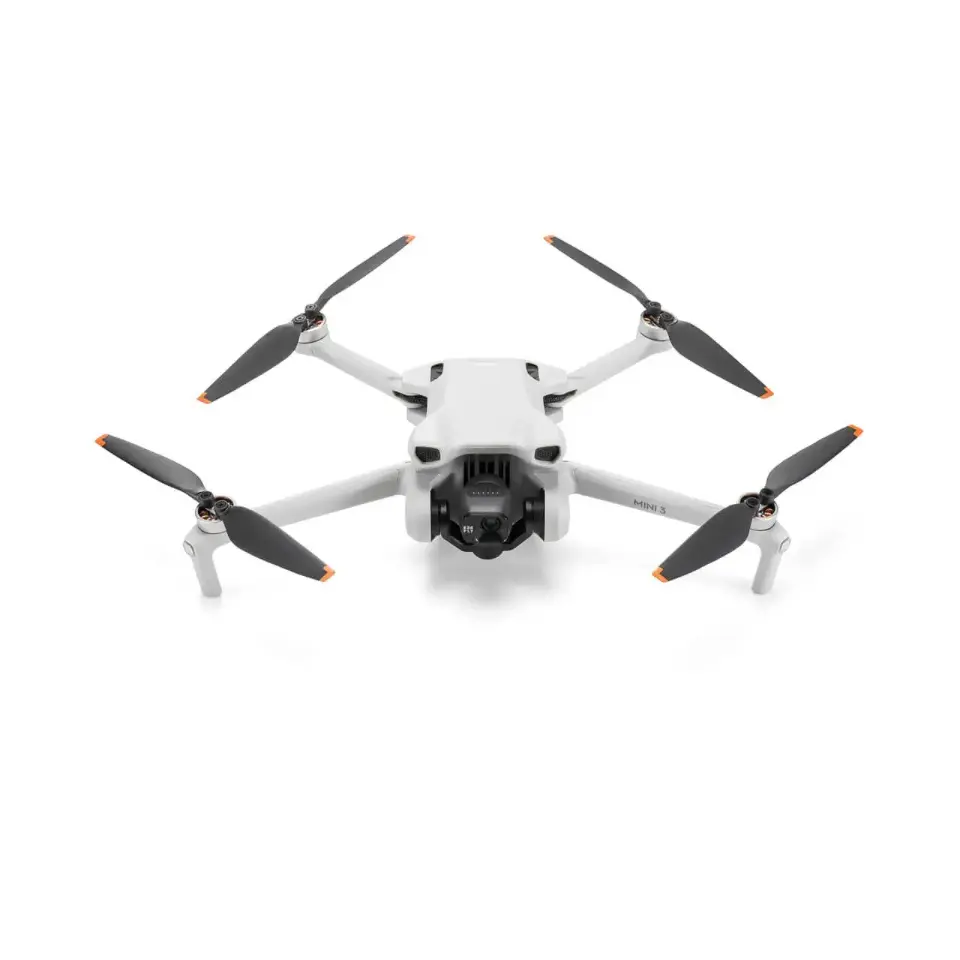
Drones designed for 2″–3″ propellers typically have a motor-to-motor distance of 100–150 mm and weigh up to 150 grams with a battery.
They use motors sized 1103–1106, or 1402–1408 for more powerful builds.
These drones are powered by 2S, 3S, or 4S batteries with a capacity of 400–650 mAh.
They’re ideal for flying in gyms, gardens, or playgrounds — fast and agile, yet still compact.
They can even carry a small HD camera or support digital video transmission.
3″–4″ drones
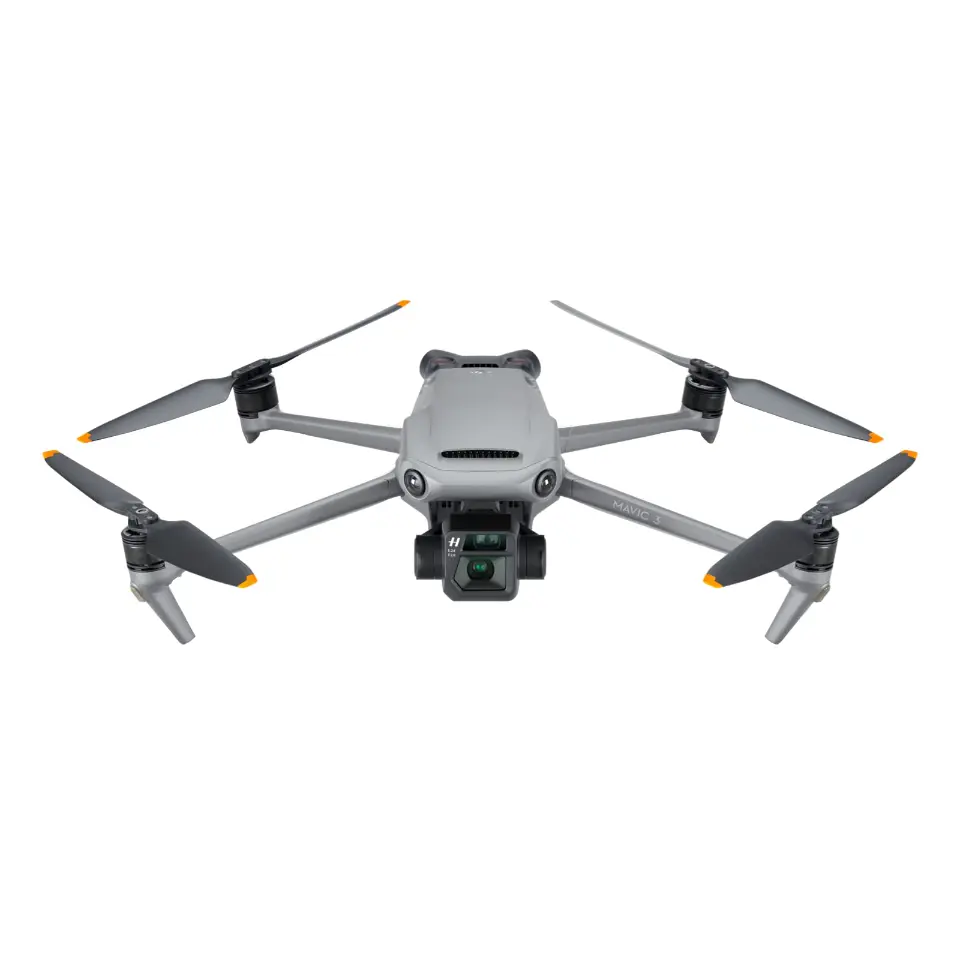
3″–4″ copters tend to have dimensions of 130–150 mm.
They use 1306–1408 motors together with a 3S or 4S battery with a capacity of 550–850 mAh.
The flight weight of the copter is around 250 grams.
It is very fast and extremely maneuverable.
A copter of this size is suitable for outside or in a large gym, where it will not leave even the most experienced pilots cold.
During competitions, it can be used on technical tracks.
Such a copter can easily carry an HD camera.
Ultralight 5″ drones
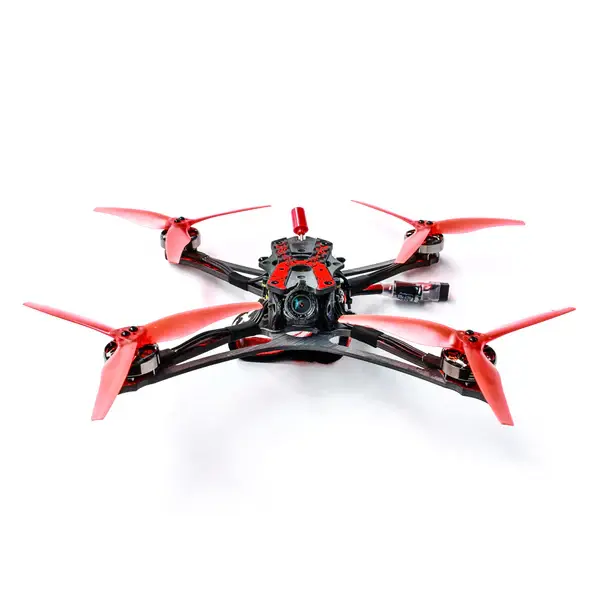
When 4″ is not enough and 5″ is too much.
The Ultralight 5″ has a flight weight of 250–300 grams.
It uses 20x20 mm stacks and motors of size 1507–2004.
This category stands out especially for its flight time, which can be 10 minutes or more without any major problems.
The copter is therefore suitable for calm flying (“cruising”) or long-range.
Often, a hybrid camera such as the Runcam Split or a lightweight naked GoPro is attached to such a copter.
Another advantage of a lightweight 5″ copter is its low noise level.
5″ drones
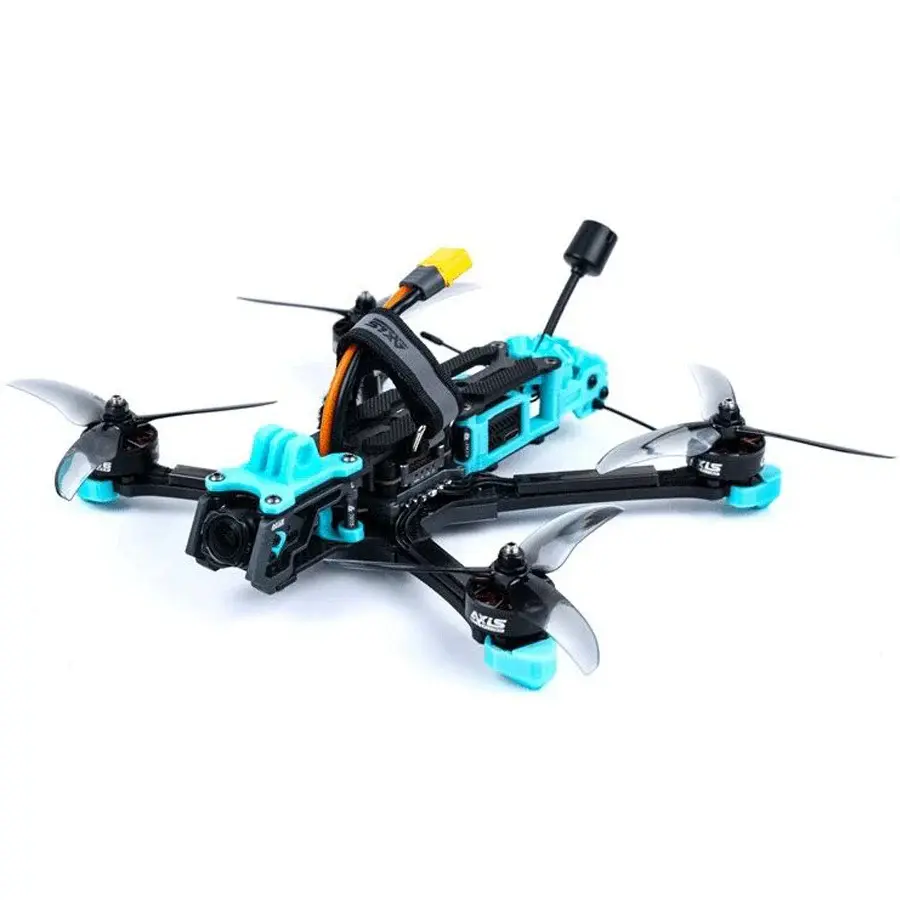
This is the most common category among FPV drones.
The copter has dimensions of 210–260 mm, weighs about half a kilo and can easily fly 160 kilometers per hour.
4S or 6S batteries are used.
The capacity is usually 1300–1800 mAh for 4S, 850–1300 mAh for 6S batteries.
The motors are common 2205–2307.
With a 5″ copter, you fly exclusively outdoors, whether you fly freestyle or race.
The ideal space is an open meadow.
Both beginners and the best pilots in the world fly with this size.
6″ and larger drones

A drone with larger propellers is usually not as agile and fast as a 5″ drone, but it has more thrust and better efficiency.
6″ propellers are sometimes used on heavier freestyle drones.
6″ and 7″ propellers are often used on long range drones due to their better efficiency.
Drones with 6″ propellers are also used in world-class competitions such as the Drone Champions League or Drone Racing League.
According to Destination
Although an FPV drone is very versatile in its use and can fly anything, there are certain features that can be an advantage for a certain style of flying. In terms of use, we can divide copters into racing, freestyle and long-range.
Racing drone
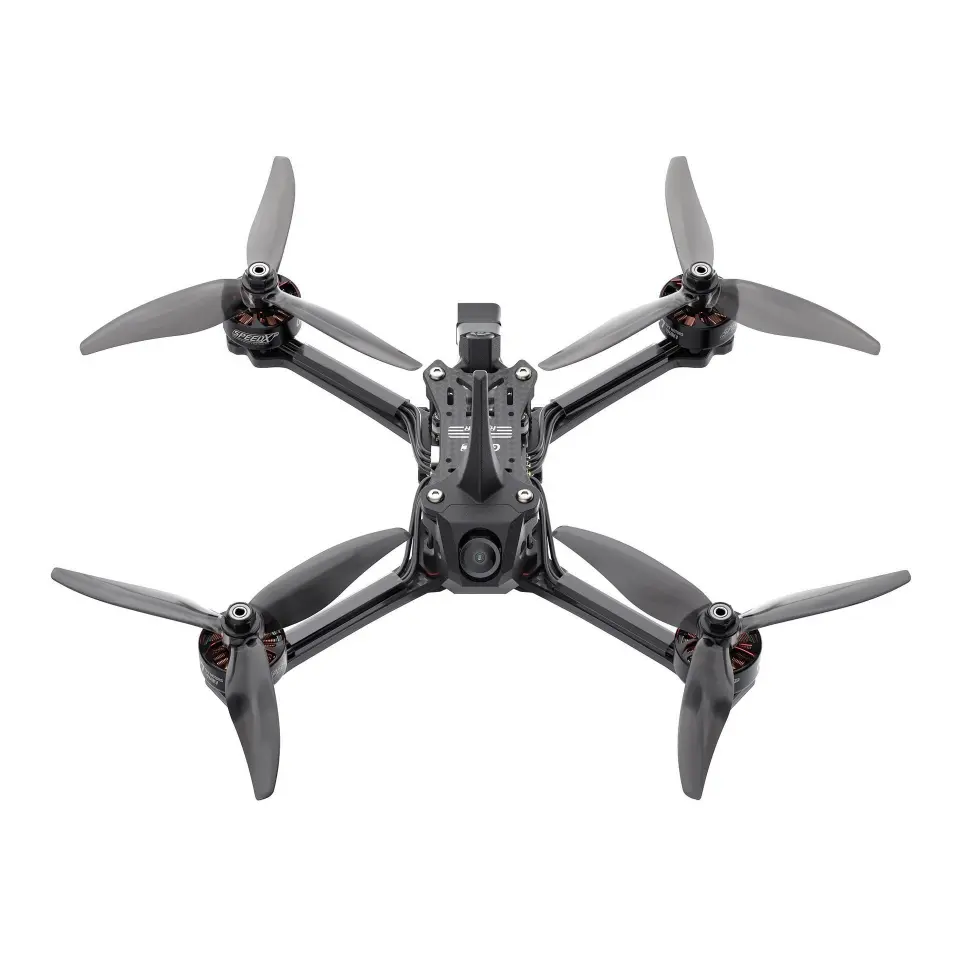
Race-track drones are built to be as light, fast and agile as possible. Frames are minimalist, with the battery usually attached to the bottom of the drone. Motors with a Kv of 1700–1900 are used in combination with a 6S battery and high-pitch propellers. Race frames often have narrow, replaceable arms, as a broken frame is not uncommon in races. An experienced pilot will run out of battery in about a minute and a half at race pace. A racing drone is usually not equipped with an HD camera.
Freestyle drone
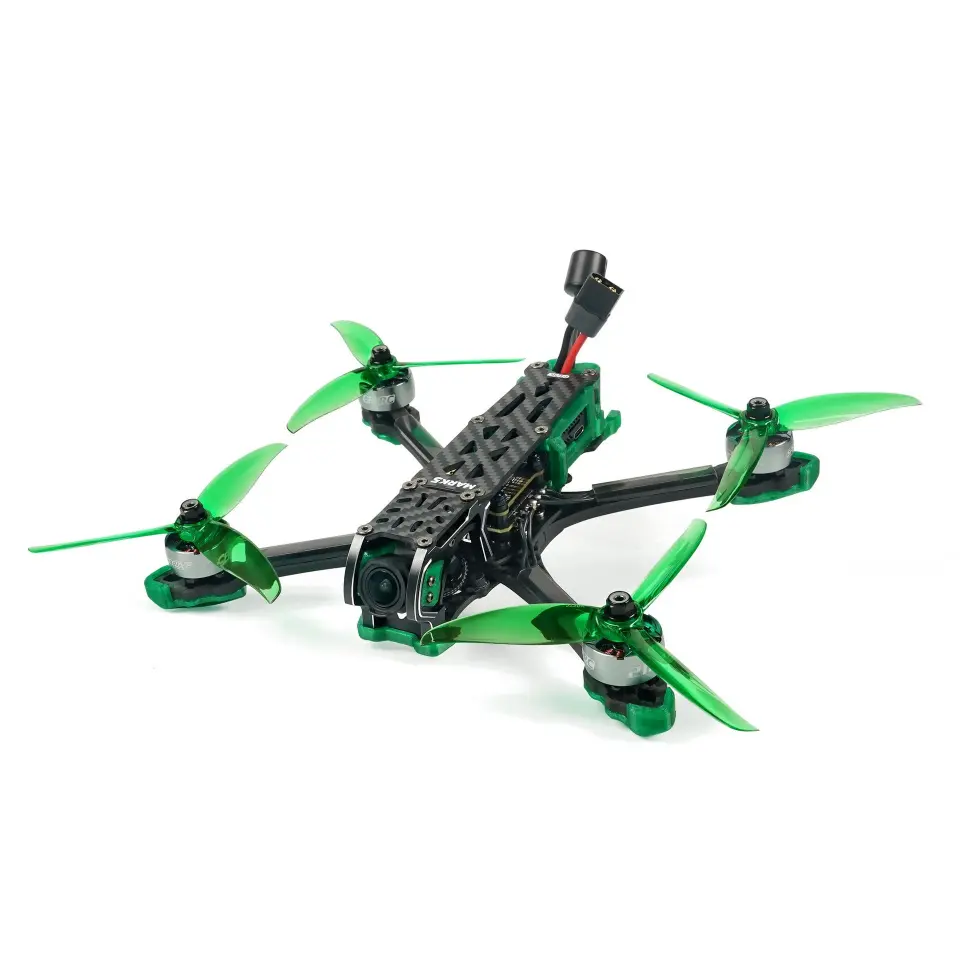
Freestyle pilots like to show off their flying skills, but only in HD video. In most cases, a freestyle drone has an HD camera mount. To make landing easier, a freestyle copter has a battery attached to the top. The battery on the top plate also moves the center of gravity closer to the propeller axis, and various aerobatic tricks can be done better with the drone. A freestyle frame is usually larger, more robust and heavier than a racing one. The greater weight of the copter is not so much of a problem when flying freestyle compared to a racing one. On the contrary, the greater inertia of the drone can be used for various tricks and the flight feels smoother and more fluid. Motors with a Kv of around 2300 and propellers with a smaller pitch are used. The copter does not have such a high maximum speed, but it reacts lively even at lower engine speeds. We would recommend a frame designed for freestyle to beginner pilots, because it is more durable and easier to build.
Long Range drone
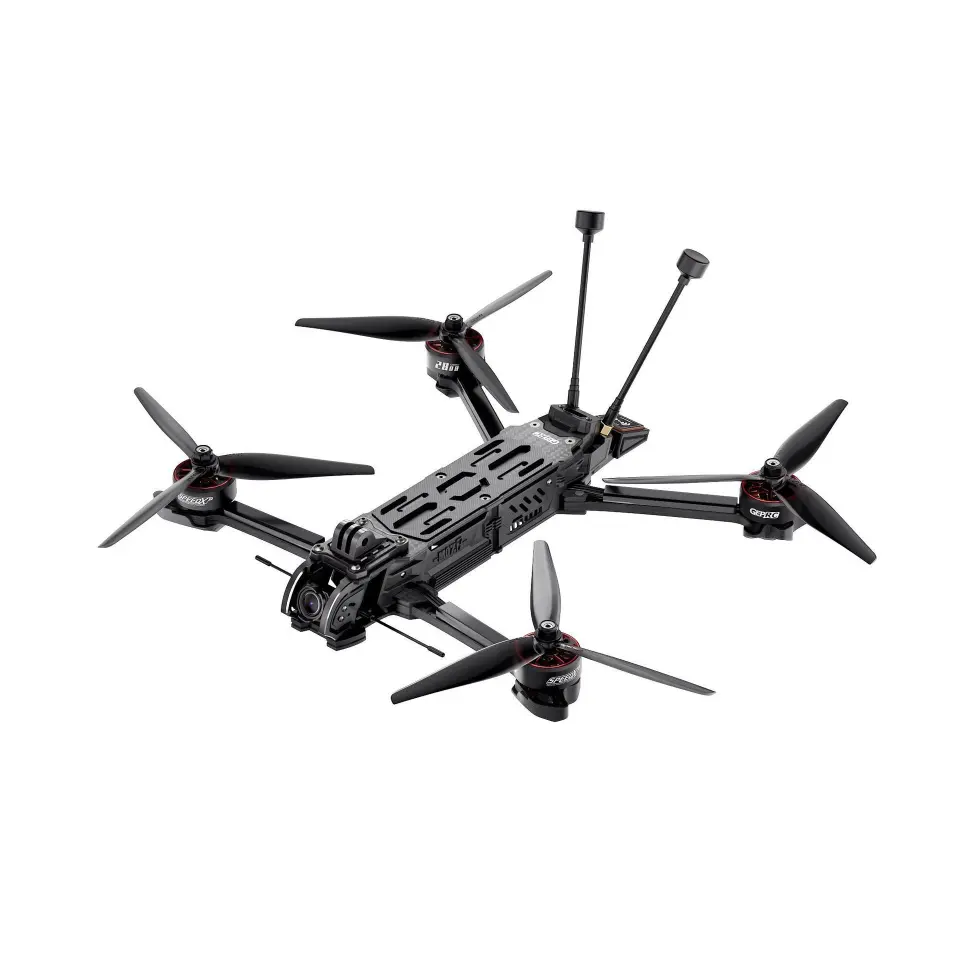
Long range is flying over a long distance. For efficiency, 6″ or 7″ propellers are used. The frame has long arms and a holder for an HD camera. Sometimes the copter is equipped with GPS. Long range flying requires a good knowledge of your equipment and a certain amount of experience, otherwise it can very easily happen that you lose the drone. We definitely do not recommend long range for beginner pilots.


